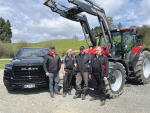New Zealand’s largest manufacturing sector is seeking assurances from the Government that employers will still deliver on-the-job training as part of vocational education reforms.
The Meat Industry Association (MIA), whose members employ about 25,000 people across New Zealand, is concerned at the decision to replace the current industry training organisations (ITOs) with “Workforce Development Councils” and to shift the role of ITOs in supporting workplace-based training to a new ‘mega-polytechnic’.
“While we recognise more needs to be done to improve access to training opportunities, the current vocational training model, where the Primary Industry Training Organisation (PrITO) organises and facilitates but employers undertake training on-site, works well for the meat processing industry,” says MIA chief executive Tim Ritchie.
“Delivery of on-the-job training is by the employer, and not external providers. We seek assurance from the Government that won’t change.”
The meat industry is one of the biggest trainers of New Zealand workers. In 2018, the sector had approximately 5,300 people undergoing NZQA-accredited, employer-led, delivered and assessed on the job training – achieving an 82% completion rate.
“Red meat processors are heavily involved in industry training, with almost all workers currently trained by the processing company they work for,” says Ritchie.
“Having a skilled workforce is extremely important to the sector. We are investing in training systems and programmes to upskill workers and promote the sector as an attractive career option. Our employer-delivered training is working and our scholarship programme, apprenticeship schemes and schools programmes are helping to attract talent to the sector.”
The meat industry’s members operate 60 processing plants, mainly in regional New Zealand and in many towns the meat processor is the largest single employer.
“The previous reorganisations of the ITOs proved to be extremely disruptive but are now working effectively for our industry,” says Ritchie.
“Companies are making important investment decisions and staff are making career choices – it is important that the Government provides more detail and certainty about how workplace-based training by employers will be supported in the future.”











